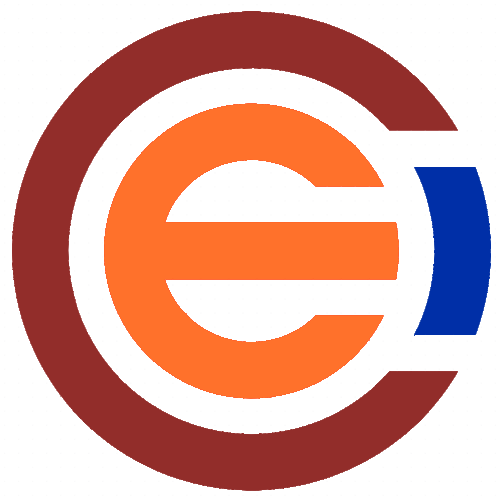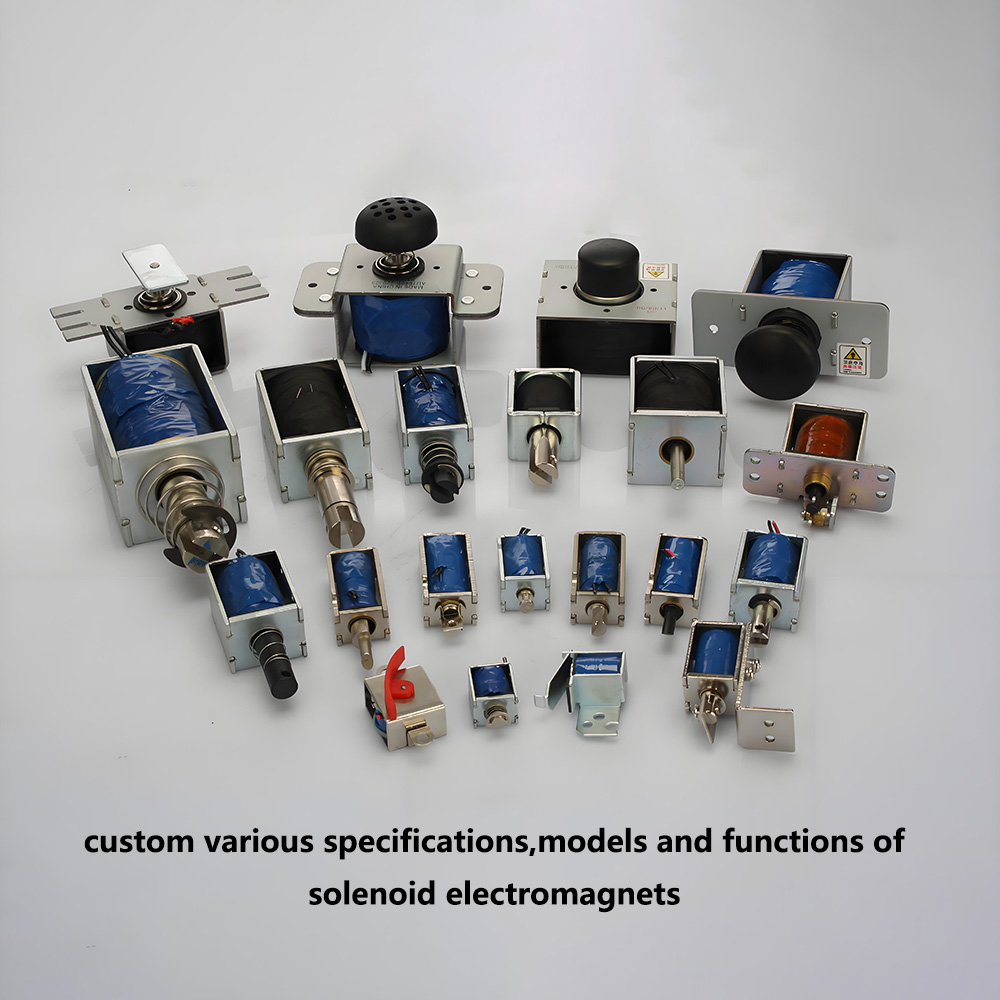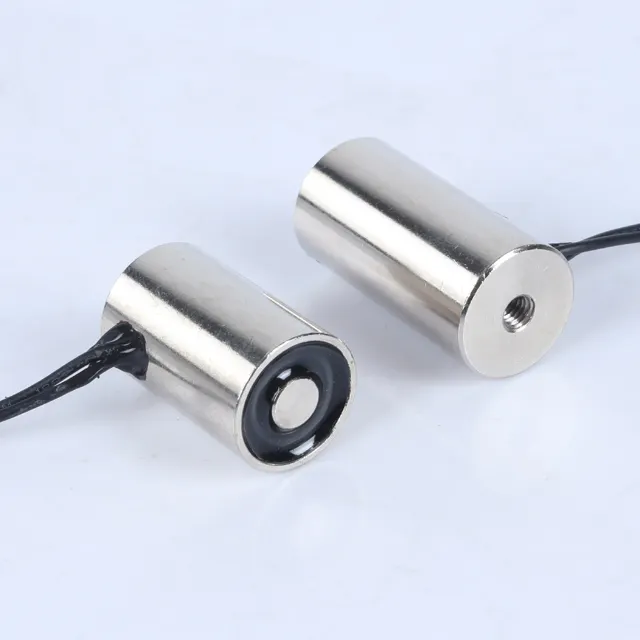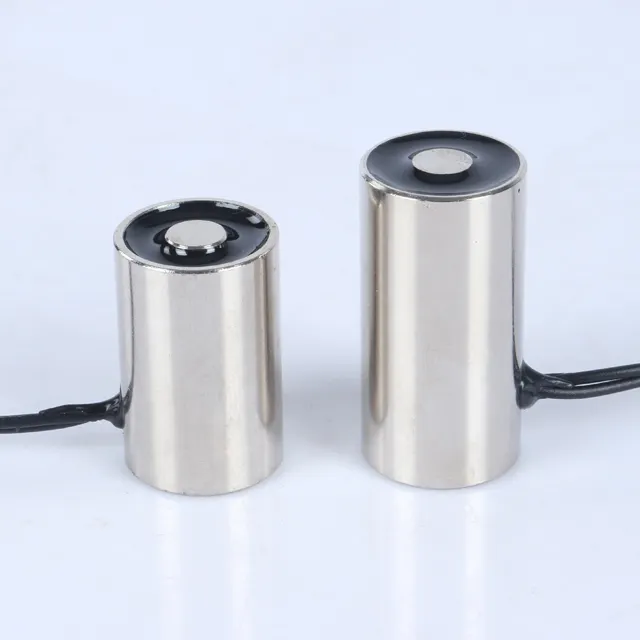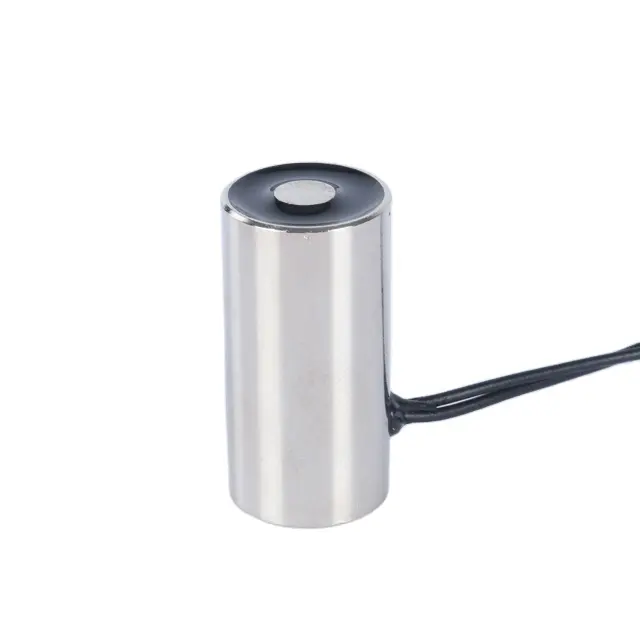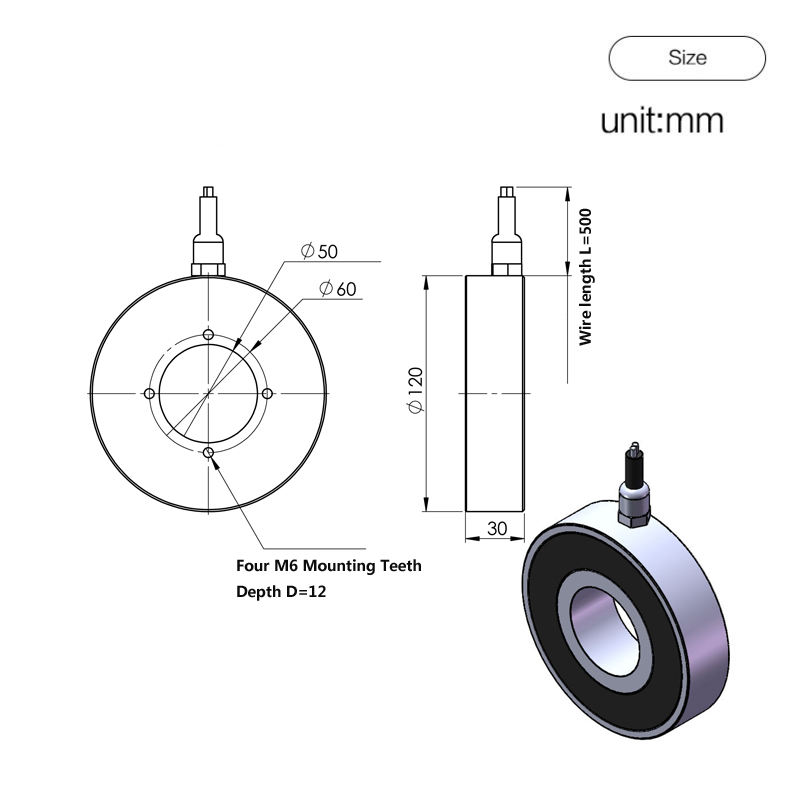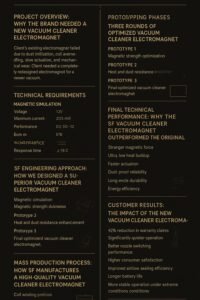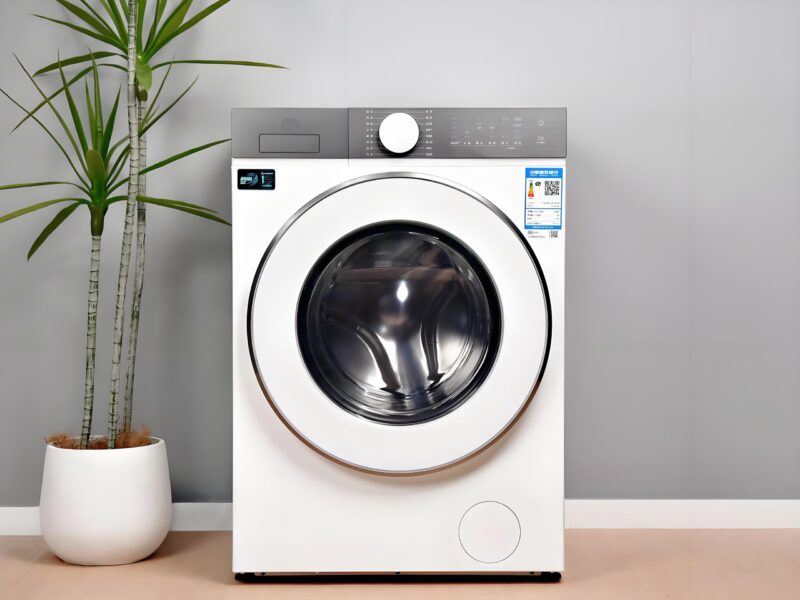Last Updated on 2025-09-03 by SolenoidFactory
In the vast world of electromagnetic technology, electromagnets stand as versatile and indispensable tools. Their ability to generate magnetic fields dynamically makes them critical components in a multitude of applications, ranging from healthcare and automotive to manufacturing and aerospace. As a manufacturer with over 10 years of experience in producing and customizing a wide array of electromagnet, we understand the intricacies involved in selecting the right electromagnet for a specific application. This blog serves as a comprehensive guide, providing insights into the common types of electromagnets, key factors to consider when choosing an electromagnet, and practical tips for making an informed decision.
Understanding the Basics: What is an Electromagnet?
An electromagnet is a type of magnet that produces a magnetic field through the flow of electric current. Unlike permanent magnets, which retain their magnetism without an external power source, electromagnets only generate a magnetic field when an electric current is passed through them. This makes electromagnets highly versatile and controllable, enabling them to be used in a wide range of applications.
What are the common types of electromagnets ?
Before diving into the selection process, it’s essential to understand the different types of electromagnets available. Here are some of the most common types:
Solenoid Electromagnets:
- Description: Solenoid electromagnets are cylindrical coils of wire wound around a bobbin or form, typically made of non-magnetic material. When an electric current is passed through the coil, it generates a magnetic field.
- Applications: Commonly used in valves, relays, and actuators for controlling fluid flow, electrical circuits, and mechanical motion.
Electromagnetic Lifters:
- Description: Electromagnetic lifters use electromagnets to lift and transport ferromagnetic materials. When the current is switched on, the electromagnet becomes magnetic, attracting the material. When the current is switched off, the magnetism disappears, allowing the material to be released.
- Applications: Used in manufacturing, recycling, and material handling industries for lifting and transporting heavy metal objects.
Electromagnetic Clutches and Brakes:
- Description: Electromagnetic clutches and brakes use electromagnets to engage or disengage shafts and control torque and motion. When the current is applied, the electromagnet attracts a friction plate or armature, engaging the clutch or brake.
- Applications: Found in machinery and industrial equipment for controlling the speed, torque, and direction of shafts.
Electromagnetic Separators:
- Description: Electromagnetic separators use electromagnets to separate ferromagnetic particles from a mixture. The mixture is passed over an electromagnet, and the ferromagnetic particles are attracted and collected.
- Applications: Used in recycling, mining, and food processing industries to separate metal contaminants from other materials.
Electromagnetic Coils:
- Description: Electromagnetic coils are simply coils of wire that generate a magnetic field when an electric current is passed through them. They can be used in a variety of applications, depending on their design and configuration.
- Applications: Found in generators, transformers, MRI machines, and other electrical and electronic devices.
Custom Electromagnets:
- Description: Custom electromagnets are designed and manufactured to meet specific requirements for unique applications. They can have various shapes, sizes, and performance characteristics.
- Applications: Used in research, development, and specialized industrial applications where standard electromagnets do not meet the requirements.
-
Rated 0 out of 5
-
Rated 0 out of 5
-
Rated 0 out of 5
-
Rated 0 out of 5
What are the key factors to consider when choosing an electromagnet ?
Choosing the right electromagnet for your application involves several considerations. Here are some key factors to keep in mind:
Magnetic Field Strength:
- Description: The strength of the magnetic field generated by the electromagnet is crucial for many applications. It determines the force that can be applied to ferromagnetic materials and the effectiveness of the electromagnet in its intended use.
- Considerations: The required magnetic field strength depends on the weight and type of material being lifted or manipulated, the distance between the electromagnet and the material, and the duration of the magnetic field’s application.
Geometry and Dimensions:
- Description: The shape and size of the electromagnet can affect its performance and applicability. Different geometries and dimensions are suitable for different applications.
- Considerations: Consider the space available for the electromagnet in your application, the orientation of the magnetic field required, and any potential interference with other components or structures.
Operating Conditions:
- Description: The operating conditions of the electromagnet, such as temperature, humidity, and exposure to chemicals or contaminants, can affect its performance and lifespan.
- Considerations: Choose an electromagnet that is rated for the specific operating conditions of your application. Special coatings or materials may be required to protect the electromagnet from harsh environments.
Power Requirements:
- Description: The power required to operate the electromagnet can vary significantly depending on its size, design, and the magnetic field strength required.
- Considerations: Consider the power source available in your application and the energy consumption budget. Efficient electromagnet designs can minimize power consumption and reduce operating costs.
Duty Cycle:
- Description: The duty cycle refers to the proportion of time the electromagnet is energized during a specific period. Continuous duty cycles require more robust designs and materials to handle the constant operation.
- Considerations: Choose an electromagnet with a duty cycle that matches the requirements of your application. Intermittent duty cycles may allow for more cost-effective designs.
Control and Monitoring:
- Description: The ability to control and monitor the electromagnet can be critical for many applications, enabling precise timing, force control, and safety features.
- Considerations: Consider the level of control and monitoring required for your application. Features such as integrated sensors, adjustable current limiting, and feedback loops can enhance performance and reliability.
Certifications and Compliance:
- Description: Electromagnets used in certain applications may require compliance with specific certifications and standards, such as CE, UL, or RoHS.
- Considerations: Ensure that the electromagnet you choose meets all relevant certifications and standards for your application. This can help ensure safety, reliability, and compliance with regulatory requirements.
Practical tips for selecting electromagnets
Define Your Requirements Clearly:
- Before starting your search for an electromagnet, take the time to define your requirements clearly. Consider the application, operating conditions, performance criteria, and budget constraints. This will help you narrow down your options and focus on the electromagnets that best meet your needs.
Research and Compare:
- Conduct thorough research on the different types of electromagnets available and their specific characteristics. Compare the performance, cost, and applicability of various options. Consider consulting with experts or manufacturers to gain a deeper understanding of the technology and its applications.
Request Samples and Testing:
- When possible, request samples of the electromagnets you are considering. Conduct testing to evaluate their performance in your specific application. This can help you identify potential issues and ensure that the electromagnet meets your requirements.
Consider Customization:
- If standard electromagnets do not meet your requirements, consider customization. Many manufacturers offer custom design and manufacturing services, allowing you to specify the exact characteristics of the electromagnet you need. This can provide a tailored solution that perfectly fits your application.
Evaluate Long-Term Costs:
- When choosing an electromagnet, consider not just the initial cost but also the long-term costs associated with operation, maintenance, and replacement. Efficient designs and robust materials can reduce energy consumption, extend lifespan, and minimize downtime.
Seek Expert Advice:
- If you are unsure about which electromagnet to choose, seek advice from experts in the field. They can provide insights based on their experience and knowledge, helping you make an informed decision.
Consider the Manufacturer’s Reputation:
- The reputation of the manufacturer is an important factor to consider. Choose a manufacturer with a proven track record of producing high-quality, reliable electromagnets. Look for certifications, customer testimonials, and industry recognition as indicators of quality.
Case Study: Choosing an Electromagnet for a Manufacturing Application
To illustrate the process of choosing an electromagnet, let’s consider a case study involving a manufacturing application.
Scenario:
A manufacturing company is developing a new automation system for assembling small electronic components. The system requires an electromagnet to precisely position and hold the components during the assembly process.
Steps Taken:
Defined Requirements:
- Magnetic field strength: Sufficient to hold small electronic components securely.
- Geometry and dimensions: Compact design to fit within the automation system.
- Operating conditions: Cleanroom environment with controlled temperature and humidity.
- Power requirements: Low power consumption to minimize energy costs.
- Duty cycle: Continuous operation for extended periods.
Researched and Compared Options:
- Evaluated various solenoid electromagnets, considering their performance characteristics, cost, and applicability.
- Consulted with manufacturers to gain a deeper understanding of the technology and its potential to meet the requirements.
Requested Samples and Testing:
- Requested samples of the most promising options.
- Conducted testing in the manufacturing environment to evaluate performance and reliability.
Considered Customization:
Found that a standard solenoid electromagnet could meet most of the requirements but needed minor adjustments to perfectly fit the automation system. Worked with a manufacturer to customize the design, ensuring it met all specified criteria.Evaluated Long-Term Costs:
- Analyzed the energy consumption of the customized electromagnet and compared it to other options.
- Estimated the maintenance and replacement costs based on the expected lifespan and manufacturer’s warranty.
Sought Expert Advice:
- Consulted with automation experts to validate the choice of electromagnet and ensure it was suitable for the intended application.
Considered the Manufacturer’s Reputation:
- Chose a manufacturer with a strong reputation for producing high-quality, reliable electromagnets.
- Verified certifications and customer testimonials to ensure the manufacturer met industry standards.
Outcome:
The manufacturing company selected a customized solenoid electromagnet that met all specified requirements. The electromagnet was successfully integrated into the automation system, enabling precise positioning and holding of small electronic components during the assembly process. The company reported improved efficiency, reduced downtime, and lower energy costs due to the efficient design and robust performance of the electromagnet.
Choosing the right electromagnets for your application requires
Choosing the right electromagnet for your application requires careful consideration of various factors, including magnetic field strength, geometry and dimensions, operating conditions, power requirements, duty cycle, control and monitoring, and certifications and compliance. By defining your requirements clearly, researching and comparing options, requesting samples and testing, considering customization, evaluating long-term costs, seeking expert advice, and considering the manufacturer’s reputation, you can make an informed decision that meets your needs and ensures optimal performance.
As a leading manufacturer with over 10 years of experience in producing and customizing electromagnets, we understand the complexities involved in selecting the right electromagnet for any application. Our expertise and dedication to quality enable us to provide tailored solutions that meet specific requirements, ensuring our customers achieve optimal results.
Whether you are developing a new automation system, upgrading existing equipment, or working on a specialized research project, we can help you choose the right electromagnet for your application. Contact us today to discuss your requirements and explore the possibilities of electromagnetic technology.
This comprehensive guide serves as a valuable resource for anyone seeking to understand and select the right electromagnet for their application. By considering the factors outlined and following the practical tips provided, you can ensure that your electromagnet choice meets your needs, enhances performance, and contributes to the success of your project.
About SF electromagnets factory
Shengfeng Electromagnet Co., Ltd. was established in 2015 and is located in the Xiansha Industrial Park with beautiful scenery and convenient transportation. The company covers an area of 16000 square meters and has modern production plants, advanced production equipment and a high-quality technical team. Since its establishment, we have always adhered to the corporate philosophy of “innovation, quality, and service”, focusing on the research and development and production of electromagnets, constantly promoting product upgrades and technological progress, and providing customers with the best quality products and services.
Why choose SF electromagnet
HIGH END QUALITY:As the best solenoid electromagnet manufacturer in china, our QC team will ensure every single product you receive are best quality. We have professional quality testing machine.
PRODUCT DESIGN:Our sampling department has complete process of making drawings into reality. We also improve your product design based on our years of working experience.Tell us what you think.
STABLE DELIVERY TIME:As the best electromagnet manufacturer & supplier,we have sufficient manufacturing capacity, big orders won’t beat us, we can still deliver the order for you in time.
BEST PRICE:We are source factory of electromagnet and the best solenoid manufacturer in China, that’s why we can provide high quality bags with best price.
PRECISE MANAGEMENT:Nothing can be achieved if we don’t implement precise management. We are a company with complete management system.
7-24 SERVICE:As the best solenoid manufacturer, 24-7 immediate response: We’ll receive your feedback to make us a better supplier.
FAQs of electromagnet
We are a Chinese top electromagnet manufacturer and our factory is located in Dongguan. Welcome to visit our factory!
We pecialize in the design and production of high quality electromagnet,solenoid valve,such as rotary solenoid, bistable solenoids, latching solenoids, open frame solenoids, tubular solenoids, self-holding solenoid
•Of course, usually we will provide free samples, and you only need to cover the freight. For custom electromagnet samples, pls send your requirements to us for checking the sample cost.
• It takes about 7 days for sample production.
Yes, we provide free design services, structural design and simple graphic design.
Sure. We can do any electromagnet with your design. Now we open a ODM solenoid which is for small quantity from 100pc to 500pc,but you can still have your own logo.
Depending on the order quantity and production details, it will take about 15 to 20 days.
Always a pre-production sample before mass production; Always final Inspection before shipment
• Power,usage,size, material, quantity, shipping destination, etc.
• You can also just tell us your requirements and we will recommend products to you.
• By sea, by air or by express.
• If you have your own freight forwarder in China, it is the ex-factory or FOB price.
•CFR or CIF, etc., if you need us to ship on your behalf.
• DDP and DDU can also be used.
• More choices, we will consider your choices.
• The price is determined by the quantity, material, processing method, size and other factors. In addition, due to our continuous
technological innovation, the prices of some of our products are extremely competitive, please contact us to quote.
